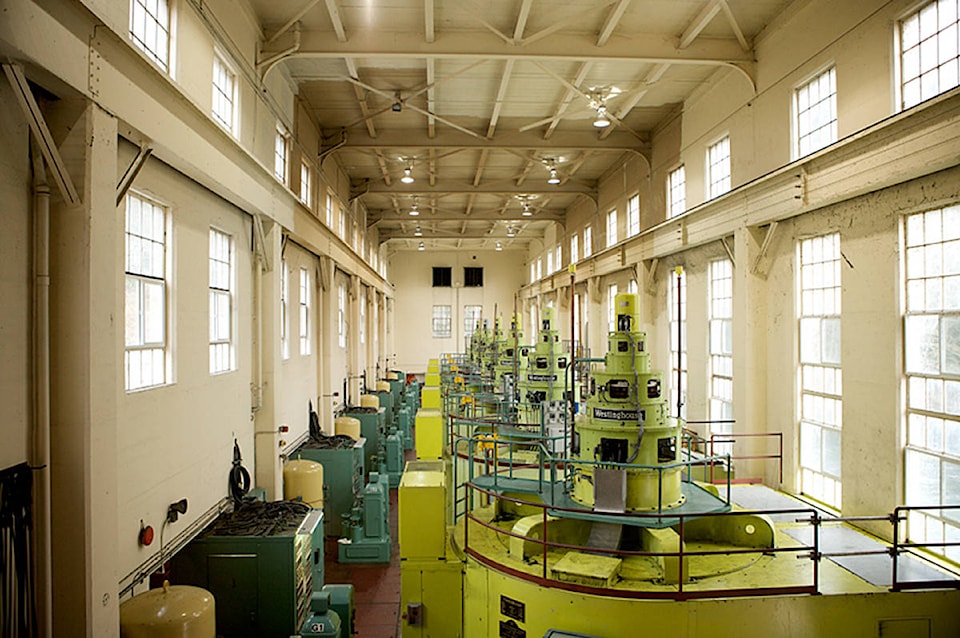Another generator at the John Hart Generating Station went offline unexpectedly early Monday morning, causing water flow down the Elk Falls Canyon to drop below preferred levels for more than an hour.
BC Hydro has a commitment to advise the community of unplanned flow reductions from the John Hart generating station down the Campbell River that drop below 80 cubic metres per second (m3/s) for more than 10 minutes. Such a flow reduction took place early Monday morning, BC Hydro spokesperson Stephen Watson said.
The generating station was running at about 88 m3/s when at about 2:10 a.m., Generator 3 went offline due to a transformer equipment issue within the John Hart substation. The remaining four operating units were increased to full capacity to make up the flow reduction from Generator 3.
BC Hydro operates the five generators to help split the flow volume so that if equipment incidents such as this happen, the operating units can be ramped up to maintain downstream river flows for fish habitat. However, at about 4:45 a.m., Generator 4 went offline due to a related substation issue.
Generators 3 and 4 are tied together through sharing the same penstock or pipeline from the John Hart dam. They also share the same substation equipment and protection and control works and so the equipment to protect Generator 4 eventually failed.
With now only three generators operating, the Campbell River flow downstream dropped to about 68 m3/s. The conditions were dark with high winds and rain.
“BC Hydro’s 24/7, on-site electrician then made an immediate and good decision to initiate a spill from the John Hart dam to have water pass down Elk Falls Canyon,” Watson said. “Canyon flows went from about 4 m3/s to about 24 m3/s. Generator 4 would likely not have immediately come back into service and would have extended the unplanned flow reduction duration had a canyon water release not been initiated.”
The river flows were back up to the pre-incident flow level of about 88 m3/s in about two hours. It took just over an hour to get back to the 80 m3/s level. Generally, 80 m3/s is the flow rate that keeps the riverbed fully covered with water, though with the gravel movement from the storms last fall, certain isolated areas can get de-watered above that flow level.
Generator 4 went back into service late Monday morning, with the Elk Falls Canyon water flow rate going back to normal. Generator 3 is expected to be back on-line this week.
BC Hydro called government fish agencies as per protocol. With safety concerns related to high winds, biologists delayed site assessments of key areas of the river until daylight. One pre-spawn adult chum mortality and one heavily predated adult chum mortality that were potentially related to the flow reduction were found. BC Hydro is also looking into their data loggers that are placed in the gravel to monitor flow levels for fish eggs in the gravel.
“At this time we expect the impact to fish to be minor,” Watson said.
